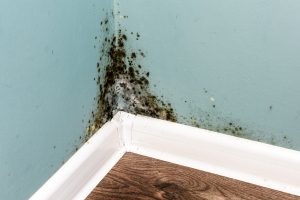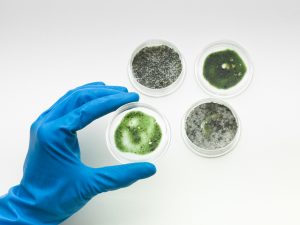What is mold, and when should you conduct air sampling for it?
What is mold air sampling? Let’s start with the definition of mold:
Mold is the general term used to describe and group together various types of fungal organisms. It is part of the natural environment, and can be found both indoors, and outdoors. Mold produces spores, which spread by floating through the air, and landing on surfaces.
While they are a critical part of the natural ecosystem, mold can pose a dangerous problem to human health when it is found indoors. The symptoms and severity one would experience if exposed to mold vary and depend on many factors, such as the type of mold present, amount of mold present, individual’s health conditions, and other general indoor air quality parameters. Let’s talk about what constitutes as a reason for conducting mold air sampling.
Generally, the symptoms are allergy-like, such as:
- Runny nose and congestion
- Eye irritation
- Sneezing
- Coughing
- Wheezing
- Lung Irritation
- Sore Throat

Pay Attention to Symptom Timing
While mold growth might be fairly easy to visually identify, sometimes relying on our eyes alone might not be enough to definitively answer whether or not there is a mold issue in an area. That being said, another sign that could indicate a hidden mold problem, is experiencing the above symptoms in a specific area, and the symptoms disappearing when you leave that area.
An example of this would be you working in an office room all morning – feeling horrible, and then feeling instant relief when you leave that room and go for some fresh air.
Time to Conduct Mold Air Sampling?

The basics of air sampling both involve drawing in a specific amount of air from an area, which will be analyzed in a laboratory to determine the presence of mold, either by growing captured mold, or counting the spores. Either way, air sampling for mold is the best way to definitively answer whether or not an area is being affected by mold.
Questions About Mold or Mold Air Sampling?
Leave a Comment or Send us a Message!
How Can We Help You?
Contact us at JADA Solutions (HSE) Inc. to speak with one of our professionals!
Newsletter
📹 Watch our latest Safety Toolbox Talk: Mould and Fungi 101: Viable vs. Non-Viable Mould Testing
💡Are all moulds considered fungi? And why should we care? This leads us to explaining the two different types of testing for mould exposure: viable vs non-viable.
🔍 Lead and Heavy Metal Exposure: Are You Protecting Your Workers?
Lead and other heavy metals can quietly put your team at serious risk - especially during construction, demolition, or manufacturing projects.
Our last Asbestos Worker in Alberta 2-Day Training Course before the Summer season happens at the end of this month!
🗓️ June 24th - 25th
⏰ 8AM - 5PM
💵 $525
📍 Sherwood Park, AB
Claim your spot now! 👉


